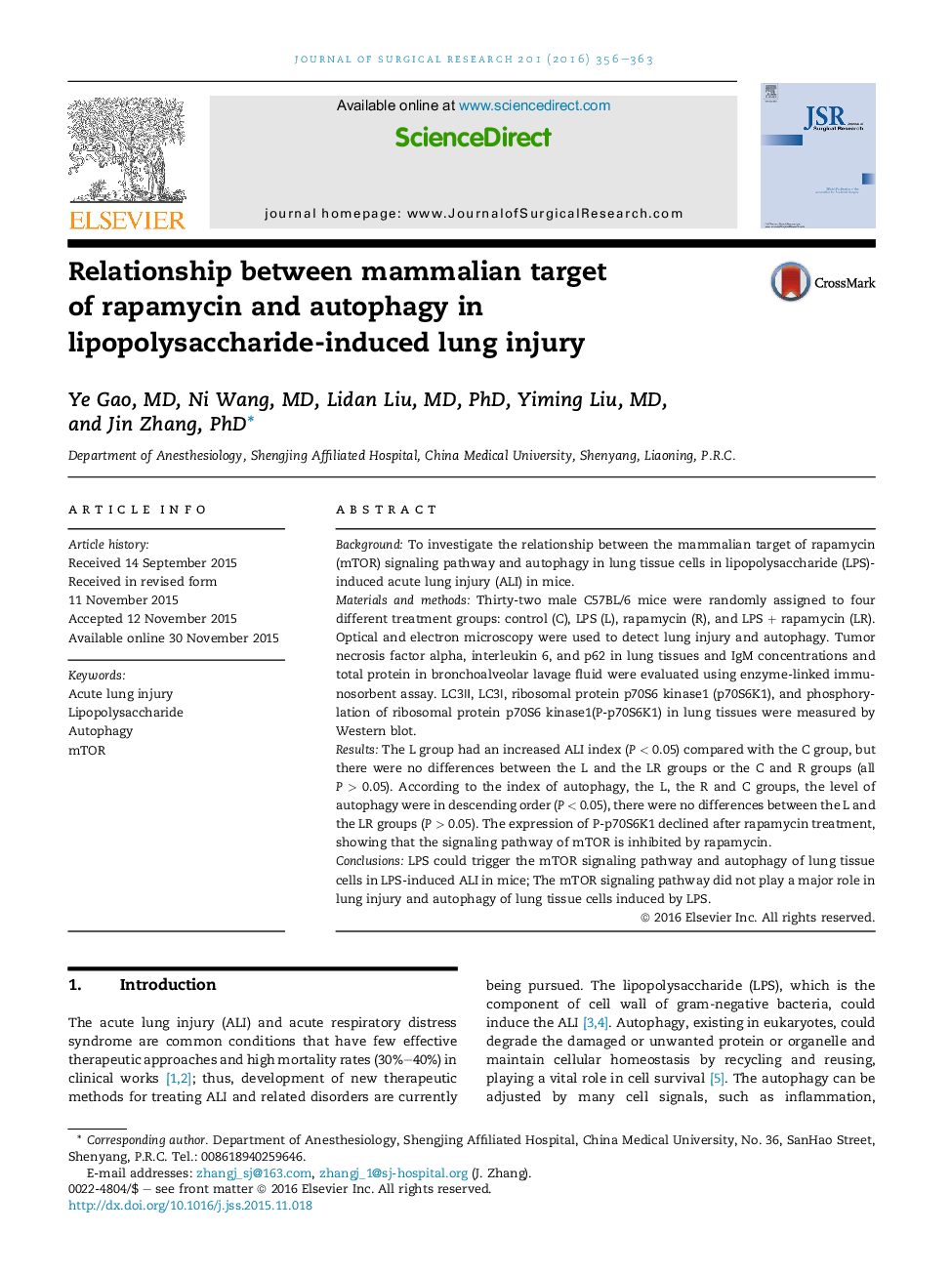| Article ID | Journal | Published Year | Pages | File Type |
|---|---|---|---|---|
| 4299398 | Journal of Surgical Research | 2016 | 8 Pages |
BackgroundTo investigate the relationship between the mammalian target of rapamycin (mTOR) signaling pathway and autophagy in lung tissue cells in lipopolysaccharide (LPS)-induced acute lung injury (ALI) in mice.Materials and methodsThirty-two male C57BL/6 mice were randomly assigned to four different treatment groups: control (C), LPS (L), rapamycin (R), and LPS + rapamycin (LR). Optical and electron microscopy were used to detect lung injury and autophagy. Tumor necrosis factor alpha, interleukin 6, and p62 in lung tissues and IgM concentrations and total protein in bronchoalveolar lavage fluid were evaluated using enzyme-linked immunosorbent assay. LC3Ⅱ, LC3Ⅰ, ribosomal protein p70S6 kinase1 (p70S6K1), and phosphorylation of ribosomal protein p70S6 kinase1(P-p70S6K1) in lung tissues were measured by Western blot.ResultsThe L group had an increased ALI index (P < 0.05) compared with the C group, but there were no differences between the L and the LR groups or the C and R groups (all P > 0.05). According to the index of autophagy, the L, the R and C groups, the level of autophagy were in descending order (P < 0.05), there were no differences between the L and the LR groups (P > 0.05). The expression of P-p70S6K1 declined after rapamycin treatment, showing that the signaling pathway of mTOR is inhibited by rapamycin.ConclusionsLPS could trigger the mTOR signaling pathway and autophagy of lung tissue cells in LPS-induced ALI in mice; The mTOR signaling pathway did not play a major role in lung injury and autophagy of lung tissue cells induced by LPS.
